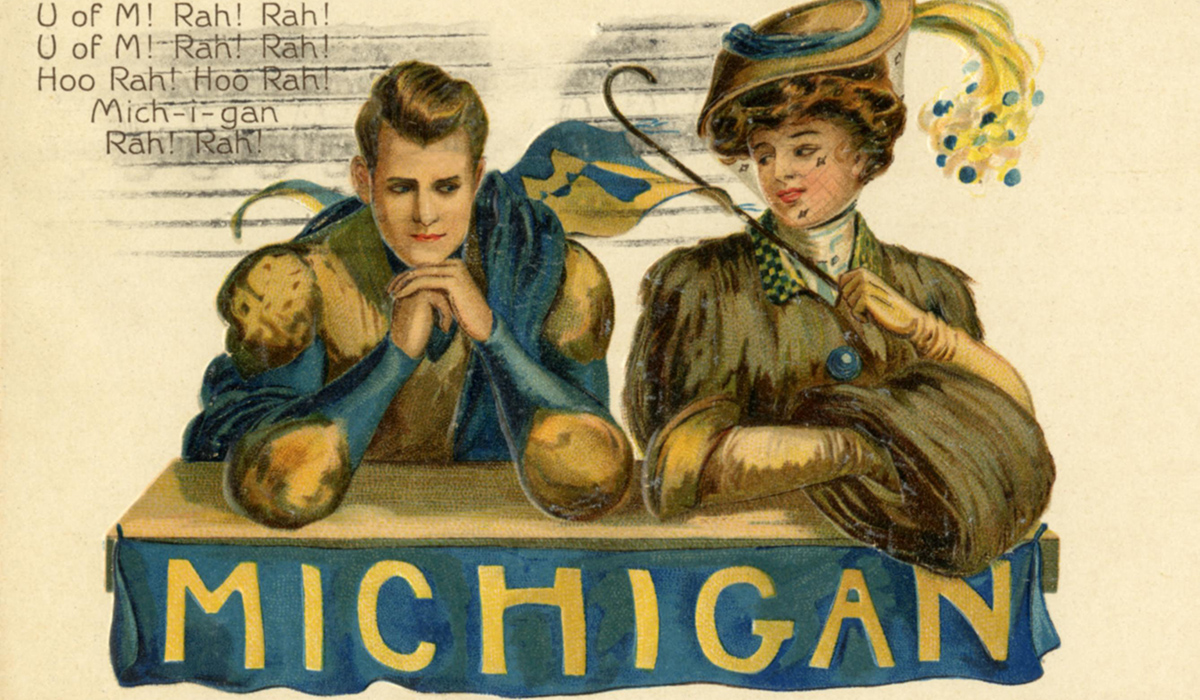“After a lapse of many years, the University is at last to have official colors,” reported Michigan Alumnus magazine in the April 1912 issue. “They will be the same azure blue and maize, which we have sung in ‘The Yellow and Blue,’ for so many years but which, it seems, have never been officially adopted.”
For much of its history, the University of Michigan recognized 1837—the year the University moved from Detroit to Ann Arbor—instead of 1817 as its founding date. Such as it was in the lead-up to U-M’s 75th anniversary celebrations during Commencement Week in June 1912.
But event organizers realized a key detail early in the preceding months: though regents and university senate members were to wear academic dress for certain ceremonies, there was no official standard of Maize and Blue for their robes and hoods to be based upon. On March 12, 1912, the university senate created a faculty committee to determine the precise shades. The group researched the colors’ origins in hopes of clarity.
They found that on February 12, 1867, a student committee—consisting of Milton Jackson, 1867; Albert H. Pattengill, 1868; and J. Eugene Jackson, 1868—was organized and decided upon “azure-blue and maize” as the school colors and received approval from the U-M literary department (in the decades prior, it seemed, each graduating class was relatively free to pick colors they felt represented themselves). But no official visual sample of either was found.
And trying to define colors via words proved an ambiguous affair. Among many other terms, dictionaries of the time defined azure blue as “the clear blue color of the skies;” “the precious stone, lapis lazuli;” and “cobalt blue.” The color maize was more consistently described as akin to the yellow of its food namesake—though, again, that could naturally vary.
The faculty committee also found that the official use of blue by the University—such as on documents and the ribbons tying diplomas—predated the 1867 resolution officially pairing azure with maize.
The faculty committee could not find a particular original and official reasoning for blue and maize, beyond the visual appeal.
On March 22, 1912, the faculty committee’s findings were presented to the regents, along with a sample of items found by alumni and student subcommittees to be acceptable shades. The resolution was approved, though the matter of how to give the colors permanent form was still to be determined.
In fact, the true, precise, permanent shades needed the technology of 2013 in order to be settled. Over a century after officially adopting the school colors, the University of Michigan, finally, now had one standard for Maize and Blue: Pantone 7406 c and Pantone 282 c.
For more insight on the University’s history with the color blue, visit the U-M Heritage Project.
Gregory Lucas-Myers, ’10, is senior assistant editor of Michigan Alum.





